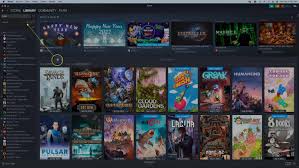What is HUD in games? A heads-up display, often known as a status bar, is generally an interface that sits on top of a game and is transparent. It does so without the user having to turn away from the action of the game or access a menu in order to do so, communicating vital information to them.
Recommended procedures for HUDs – What is HUD in games?
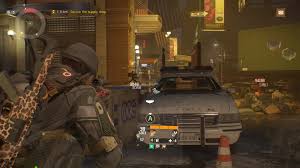
What is HUD in games? – The heads-up display (HUD) of a game should, ideally, allow players to modify the size of all of its components and move them around to better suit their preferences. Not only does this allow your devoted, expert players fine-tune their game, but it also enables players whose eyesight is impaired or who have a restricted field of view clearly perceive what is going on.
For some video game designers, the amount of work required to create a heads-up display (HUD) that is fully modifiable by players is prohibitive. What is HUD in games? – A viable solution would be to provide users with the ability to scale the whole HUD. In the event that this cannot be accomplished, make sure that the user interface components you construct are easy to understand, legible at a glance, and that everyone can utilize them.
Health
At-a-glance design
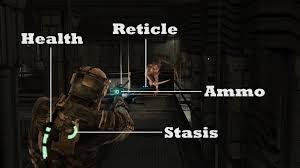
What is HUD in games? – If the player character has a large total number of health points, it would be excellent to display both a numerical value and a graphical depiction of the player’s health. This provides gamers with more accurate information on the amount of damage they are suffering while also allowing them to analyze their current health as a percentage at a glance.
Demonstrate the acceleration by the use of animation.
A player may see how rapidly they are losing health without having to perform a lot of mental calculation if the game uses a graphical representation such as a bar or row of hearts. What is HUD in games? – Numbers on their own do not provide an accurate representation of acceleration.
Displays of health information that are both multisensory and diegetic
What is HUD in games? – Make sure that you are utilizing audio to indicate both the loss and gain of health as well, so that players who have little or no eyesight can still recognize when they are being hurt. This enables all players to concentrate on the game itself rather than glancing at the user interface (UI). There are ingenious methods to signal health diegetically that do not involve utilizing an aspect of the UI, and all it needs is a little bit of imagination (think Super Mario Bros., where Mario gets smaller when he takes a hit).
The Secondary Statistics
At-a-glance design

Displaying a graphical representation in addition to a number is great for supplementary statistics like as experience points, mana, stamina, ammunition, and so on. What is HUD in games? – This allows players to maintain their concentration on the game at all times. Bars are a tried-and-true method for demonstrating this, but you may also take into consideration other, more creative options, such as dials, ammunition clips, stacks of cash, and so on.
Statistics based on several senses and the diegetic world
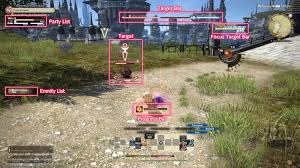
What is HUD in games? – If you have a large number of secondary stats, you should think of methods to indicate them diegetically (inside the game itself) rather than on the heads-up display (HUD). This will provide an additional layer of realism. Is it possible to visually portray the stamina of a character by displaying them growing fatigued and panting, as opposed to expressing their stamina with a bar?
Score
Prominence
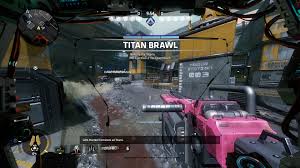
In your game, how crucial is it that you keep score? What is HUD in games? – Is it something that could be postponed until the results page, so allowing players to have a deeper sense of immersion in the game? Or do things like combinations and multipliers play a significant role in the gameplay? Choose the size of score items and the prominence they have in the game based on how significant they are to the gameplay.
Feedback on the Audio
If the player’s score is an important part of your game, make sure to give them plenty of positive feedback and make use of audio to let them know how they’re doing. What is HUD in games? – For example, you could use rising musical notes or louder sound effects when the player scores big combos, or you could use a voiceover to encourage them as they play.
Timer
Readability
A visual timer is more simpler to understand than a numerical timer owing to the fact that it is comparable to other types of statistics. What is HUD in games? – As a result of this, visual timers are preferred. You might perhaps warn the players that time is running out by including animations and juice into your game. Consider all of the many things that the timer may stand for in the game world, such as the fuse for a dynamite, a pot that is ready to boil, the day/night cycle, and so on and so forth.
Observations and Remarks About the Noise
What is HUD in games? – Instead of using ticking noises, you could find it more beneficial to creatively incorporate sound into the atmosphere of your in-game world. Ticking sounds are overused, and this can be bothersome to many players. Ticking noises are a tired cliché that many gamers find to be quite irritating.
Crosshair
Customization
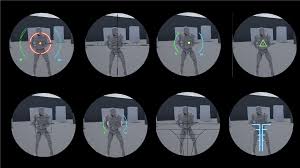
If all went according to plan, the game’s settings menu would provide players the ability to personalize not just the look of the crosshair but also its dimensions as well. What is HUD in games? – This would be the best-case scenario.
The option to use a large crosshair not only helps novice players and players with poor vision see where they are aiming, but it also helps professional gamers who play your game with the intention of maximizing their efficiency. This is because novice players and players with poor vision have a harder time seeing where they are aiming. The reason behind this is because the bigger crosshair is simpler to see.
Inside the crosshair itself is a simplified version of the head-up display (HUD).
You may indicate the spray radius, amount of recoil, cooldown, or other aspects for each of the unique weapons in your game by adjusting the crosshair’s thickness, color, and form. This can be done by clicking on the weapon in question and selecting the “Edit” button.
What is HUD in games? – To do this, click on the weapon in question, then pick the “Edit” button from the drop-down menu that appears. You have the option to animate the crosshair in order to depict hits, critical hits, or any other behaviors that have taken place. This is due to the fact that the player’s attention is often drawn to the middle of the screen regardless.
Cursor
Style
What is HUD in games? – In addition to expressing to the player which actions are available to them to complete inside the game, the pointers and cursors in your game give an opportunity to represent the style of the game in the user interface (UI). While building the user interface for your game, this is a vital component to take into consideration.
Accuracy
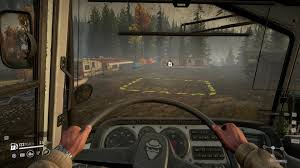
Ensure that your pointers accurately depict the locations where the user intends to point by making it a priority to perform this check. In the event that this is not the case, participants of the game can find the accuracy of your points to be annoying and challenging.
What is HUD in games? – If your cursor is shown as a dot, what size hitbox does that dot have, supposing that it is a dot? If you’re putting your gamers through the user testing, do they sometimes click on things that they shouldn’t while they’re playing the game?
The Cursor Performs the Duties of a Head-Up Display in Condensed Form
You are free to put your imagination to work in order to think of new uses for the many cursors that stand for a variety of tasks, and you are encouraged to do so. Analogous to how the user’s cursor transforms into a hand when it is lingering over a link in a web browser, you should think about the many ways in which you may offer the user with feedback on which UI elements and in-game things they can interact with and which ones they can’t.
What is HUD in games? – Always make sure to provide the player with visual as well as audible feedback, so that they are aware of whether or not their input was effective. This will allow them to make more informed decisions.
Accessibility in addition to operational capabilities of compatibility with other systems
What is HUD in games? – It would be ideal if players could change the size of pointers and cursors on their own, making it possible for players with limited or no vision to see the cursor. Gamers who play on high-resolution screens, who frequently experience user interface elements that are incorrectly scaled and extremely small, will also benefit from this change.
When developing content for multiple platforms, you need to exercise extreme caution when determining the extent to which the mouse pointer will serve as the primary visual indicator that action is taking place. Games on mobile devices that rely on touch controls often do not have mouse cursors. This is because of the kind of the data that was submitted.
>> Read more:
- How to Cheat in the Gunblood Game
- NBA Jam Cheat Code on Xbox: Full for Gamers
- Half Life 2 Cheat Codes for Gamers
- Elden Ring Cheat Offine [code 100% working]
- The Most Complete Pokemon Type Chart
- Pokemon Girls Hunter 3
- Shindo Life Codes – RELL Coins and Free spins!
- Red Dead Redemption 2 cheats: cheat codes for red dead redemption 2
- How to Delete Games on Nintendo Switch
- What is Bloom in Games? What Should I Do, Activate it or Deactivate it?

